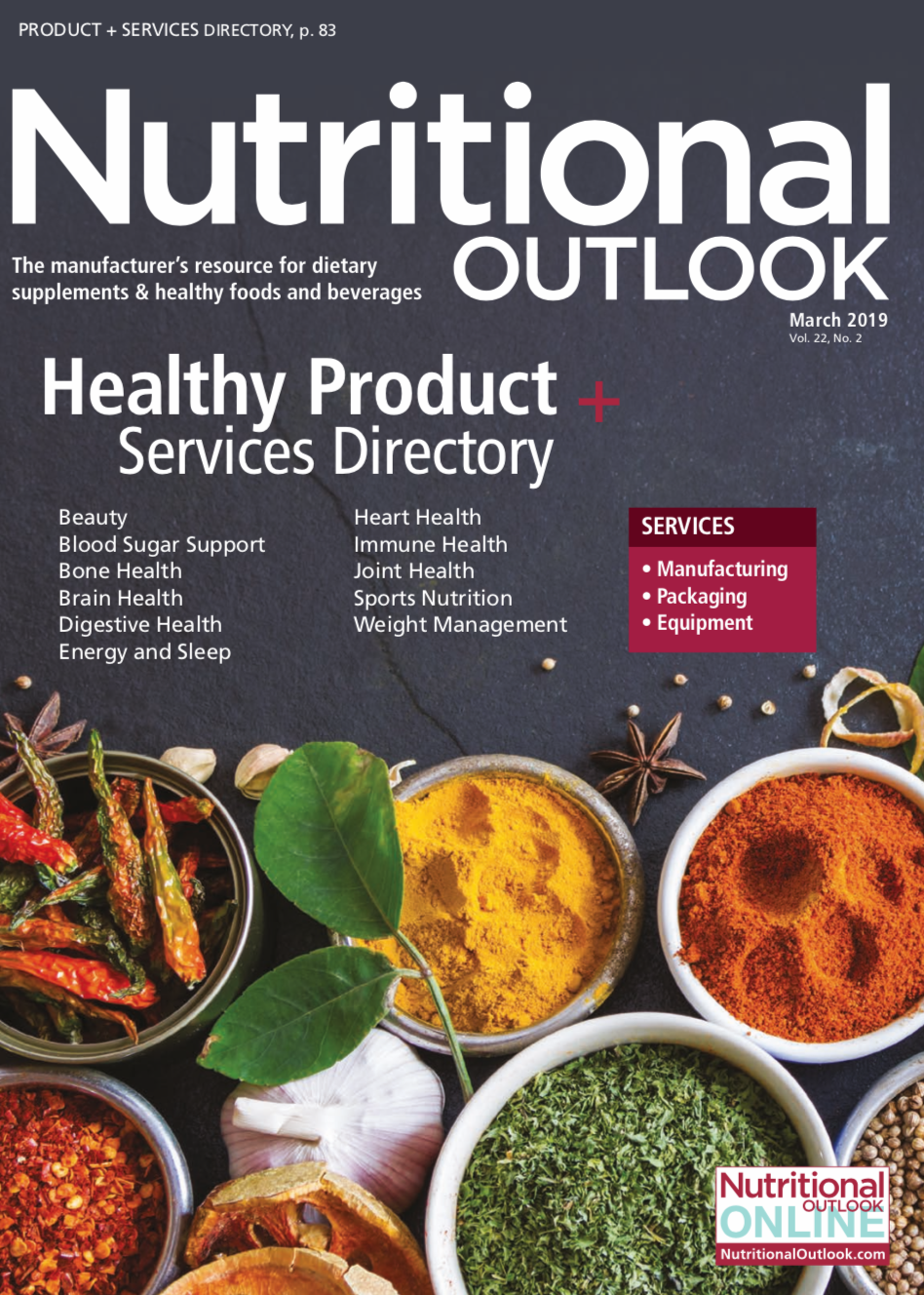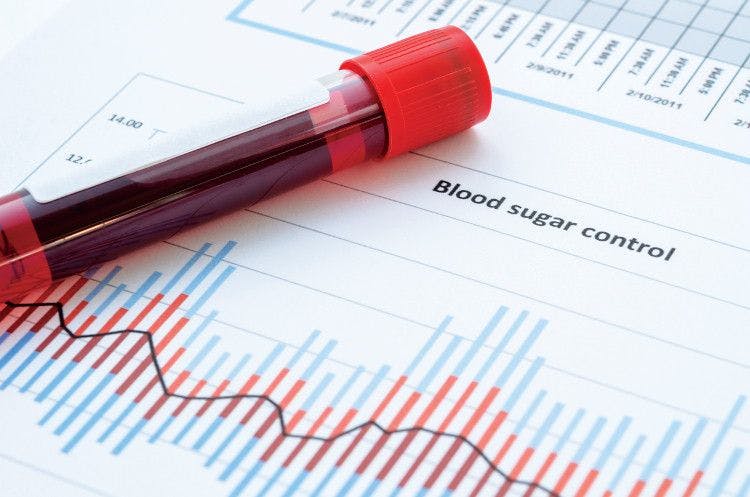Heart health supplements market is backed by marquee ingredients
The heart health category remains important to the dietary supplement industry because it includes a stable of products that have proven efficacy and consistent usage.
Photo © AdobeStock.com/hywards

The heart health category remains important to the dietary supplement industry because it includes a stable of products that have proven efficacy and consistent usage. Ingredients such as omega-3 fish oils and coenzyme Q10 (CoQ10) remain among the top-selling dietary supplement ingredients not only in the heart health category, but in the supplements market overall.
According to SPINS, in the heart health category-specifically in the U.S. conventional, multi-outlet channel-fish oil concentrates were the number-one-selling ingredient during the 52 weeks ending November 4, 2018, followed by psyllium and CoQ10. In the U.S. natural channel, CoQ10 was the top seller, followed by fish oil concentrates, garlic, and red yeast rice.
Despite impressive sales of some of these heart health ingredients, especially in the mainstream space (where, for instance, U.S. sales of fish oil concentrate for heart health totaled a whopping $161 million last year), sales growth for many major ingredients in the heart health market has been slowing, according to SPINS. Fish oil concentrate sales declined 13.5% in the multi-outlet channel last year (although they did rise 7.4% in the much smaller natural channel). CoQ10 sales in the multi-outlet channel fell only 3.3% in the multi-outlet channel and by only 0.9% in the natural channel, staying relatively stable. Ahead, we take a look at a few category leaders.
Omega-3s
These fish oil numbers are consistent with other market research, according to Chris Gearheart, director of member communications and engagement for the Global Organization for EPA and DHA Omega-3s (GOED; Salt Lake City). “GOED’s most recent Ingredient Market Report corroborates a possible decline in U.S. fish oil sales. In 2017, at least, demand for EPA and DHA raw material in the U.S. appeared to be flat or slightly declining,” he explains to Nutritional Outlook.
However, U.S. sales are only part of the picture, and sales figures are looking rather positive in other parts of the world. “In contrast, demand for EPA and DHA is growing in volume and value in multiple Asian markets, especially in China, South Korea, Japan, Southeast Asia, and India,” he continues.
Omega-3’s declines in the U.S. may be due to negative press about omega-3s after results were released last year from two large-scale studies: the VITAL study (Vitamin D and Omega-3 Trial) and ASCEND study (A Study of Cardiovascular Events in Diabetes). In both studies, omega-3s failed to show statistically significant effects on primary outcomes, but little was reported on secondary outcomes, which did have significant positive effects. (Nutritional Outlook covered more of these outcomes in its January/February 2019 Ingredients to Watch coverage.)
Unfortunately, the lack of reported significant improvement in the primary outcomes of recent large-scale studies may be preventing physicians from recommending supplements as well. Gearheart corroborates this fact. “Our consumer data suggests that the main obstacle to Americans getting enough omega-3s is a lack of recommendation by a healthcare provider,” says Gearheart. “That’s why GOED has been doing more and more outreach to nurse practitioners, registered dietitians, physician’s assistants, and pharmacists over the past several months.” The association’s new education campaign is committed to addressing these practitioners.
CoQ10
CoQ10 is a well established and well recommended nutrient by cardiologists, particularly prescribed to patients on statins because statin drugs reduce the amount of naturally occurring CoQ10 in the body, and CoQ10 is crucial for producing cellular energy not only for the heart but for other bodily functions.
“Because of CoQ10’s ubiquitous role at the human cellular level, the ingredient plays an important role in benefitting many areas of the body,” explains Scott Steinford, president of the CoQ10 Association. “Virtually every cell of the human body utilizes CoQ10 to convert energy. Therefore, the need for CoQ10 is present in every organ. Deficiencies or inefficiencies from CoQ10 depletion are caused by aging, disease, and normal reduction of CoQ10 production through our lifetime. CoQ10 has been studied to benefit numerous areas of the body, from oral health to skin health as well as many other health concerns.”
Considering these benefits, CoQ10 may get a boost, among other ingredients, as more consumers become aware of mitochondrial health, cellular energy, and its connection to our health and aging, according to SPINS. The market researcher pegged mitochondrial health as one of the 10 market trends to watch in 2019, in its “Top 10 Trend Predictions for 2019” report.
“In terms of consumer awareness, the mitochondria’s connection to health is entering an important educational growth phase. This is similar to recent increased awareness of the endocannabinoid system, and, in some ways, it appears to be reminiscent of early-stage trends related to the microbiome from around 15 years ago,” SPINS said. “The microbiome, endocannabinoids, and mitochondria are all important systems of the human body, and together they contribute to a more holistic understanding of health and wellness.”
A related product also ranked in the top 10 of cardiovascular ingredients in the multi-outlet channel, according to SPINS, is ubiquinol, the reduced form of CoQ10. Although ubiquinol was only the seventh-highest-selling ingredient in the multi-outlet channel, its sales in that channel did increase by 27%.
Ubiquinol became commercially available in 2007. It is a relatively new ingredient compared to CoQ10, which has been on the market for over 50 years. CoQ10 converts to ubiquinol in the body, and therefore ubiquinol sellers tout claims of better absorption, which, in addition to the ingredient’s relative novelty among consumers, may contribute to its spike in sales. However, CoQ10 still has more clinical support and a larger share of the market.
Though at times used interchangeably and at other times as competing products, CoQ10 and ubiquinol each have a role to play in the body, meaning that there is room in the heart health category for both. “The two forms do have distinct functions in the body,” says Steinford. “They actually act as redox pairs with the ability to recycle each other as needed. This is important because ubiquinone”-meaning the conventional form of CoQ10-”is essential for life, and the body cannot survive without the energy it provides, so its life-sustaining energy must be protected and maintained. This is where ubiquinol steps in to recycle and maintain ubiquinone stores, serving as a defense system with other antioxidants to also protect the body from free radicals, super-oxides and the effects of aging.”
Psyllium
Soluble fiber is also worth keeping an eye on in the heart health category. According to SPINS data, psyllium sales have been thriving. In the conventional, multi-outlet channel last year, psyllium sales increased 3.5% to total $143 million-taking the number two spot and bumping CoQ10 down to number three. This may hint at an increased interest in the role soluble fiber plays in heart health, with ingredients such as oat having a lot of recognition as a food and functionality as an ingredient.
In 2017, for example, Naturex (now a subsidiary of Givaudan; Vernier, Switzerland) acquired Swedish Oat Fiber, which specializes in oat bran and oat beta-glucan, a soluble fiber. Their Sweoat Bran ingredient comes in various concentrations to support different applications such as bakery and beverage, targeting functional foods.
“If you have 3 g beta-glucan a day for a month, you lower your cholesterol by at least 20%,” says Jette Bergwall, development director, oat global business for Naturex. “That is a health claim approved by FDA. It’s a health claim in Europe as well, approved by EFSA, and it’s approved by many countries all over the world where we’ve applied for health claims.”
Looking Ahead
While many of these ingredients are on a stable or slightly delayed trajectory, don’t count out the heart health category as an area of potential promise, especially as the population of aging adults continues to grow. As recently as last year, the U.S. Census Bureau predicted that the number of older people in the U.S. will outnumber the number of children for the first time in history. By 2030, the bureau notes, 1 in 5 U.S. residents will be of retirement age. The time to address potential new customers is now, and the market is backed by some solid ingredient science that hopefully will see this category thrive in years to come.

Prinova acquires Aplinova to further increase its footprint in Latin America
April 7th 2025Prinova has recently announced the acquisition of Brazilian ingredients distributor Aplinova, which is a provider of specialty ingredients for a range of market segments that include food, beverage, supplements, and personal care.

.png&w=3840&q=75)

.png&w=3840&q=75)



.png&w=3840&q=75)



.png&w=3840&q=75)
























